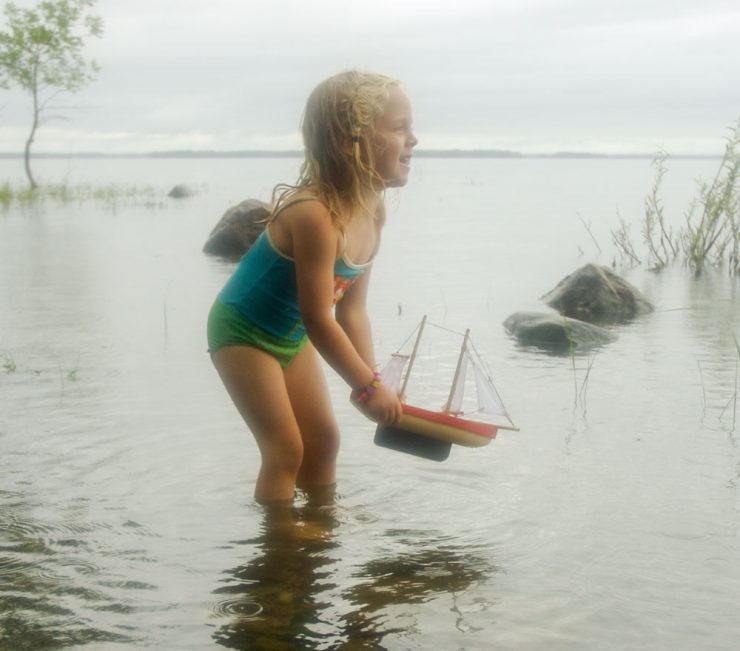Children + Water = Fun
We have a beloved Golden Retriever who can seemingly smell water from hundreds of yards away, making a beeline for anything deeper than dew and, without hesitation, diving in to make it a full-body experience. Like him, our children gravitated to every form of water from still ponds to running streams. From a tub filled with their first bath to their hours of rainy day play, they all loved interacting with any water they could find.
They stood under eaves when the water poured off the roof. They played in the kitchen sink with soap bubbles. They rolled in the snow until it soaked mittens and coats. They waded in streams until their boots filled with water. They spent many quiet hours moving water from lake to sand along the lake. Often, they found their way into water against adult wishes, the lure of water being a much stronger force than parental censure.
While I cannot explain the strong attraction between children and water, I know that our children were not alone in their love. As parents, we can foster both curiosity and respect for the elemental power of water, its risks, and its pleasures.
- Safety First! While we should not scare our children unnecessarily, adults who are themselves comfortable and confident around water should always stay aware and present when children are playing in and around water. Let children explore unhindered by anything but adult vigilance and common sense limitations. Share the limits with them while explaining only appropriate information for their age regarding the dangers.
- Offer variety. Little streams, babbling brooks, the still water of lakes and ponds, the rush of waves, or the slow-moving power of the tides all have their own enchantments. Even the swiftly moving current of a gutter in a thunderstorm can captivate. For the littlest ones, a small bowl of water with some measuring cups, pitchers or a tea set can be hours of pouring and playing and pretending.
- Add toys. A tea set, with its pot and cups, lets children control the water. A boat in the bathtub or on the surface of a pond can fascinate the child learning what does and does not float. The same boat on a flowing stream suddenly has a purpose in its motion. A pail at the beach or lake lets children move the water from here to there, using the water to build castles or fill moats.
- Dive in together! Playing in the water with your children has many benefits. A parent can encourage the reluctant child to be a little braver about the experience. You will also know more about what is happening if you’re sharing an umbrella, cavorting in the pool or on the other side of the snow fort.


